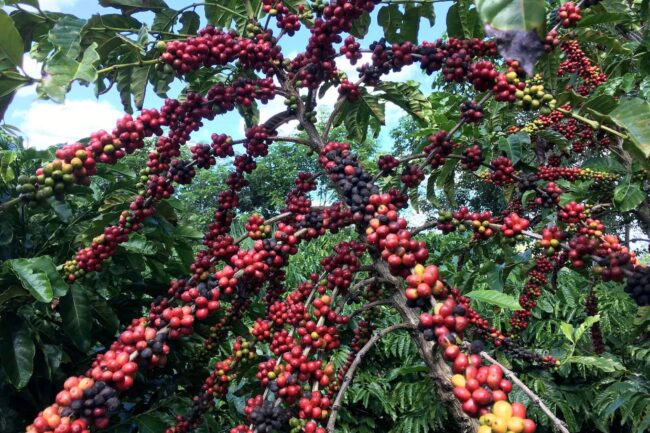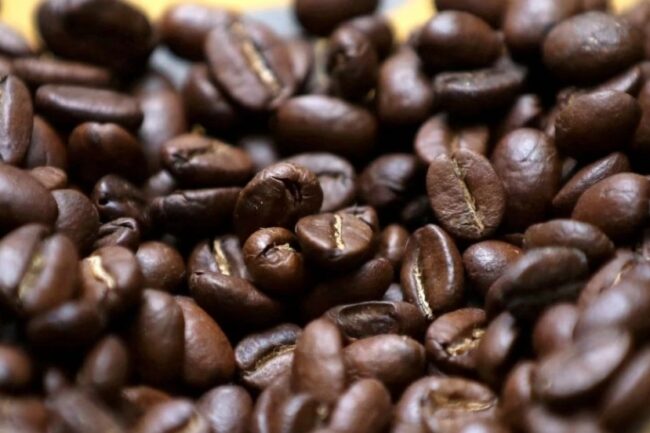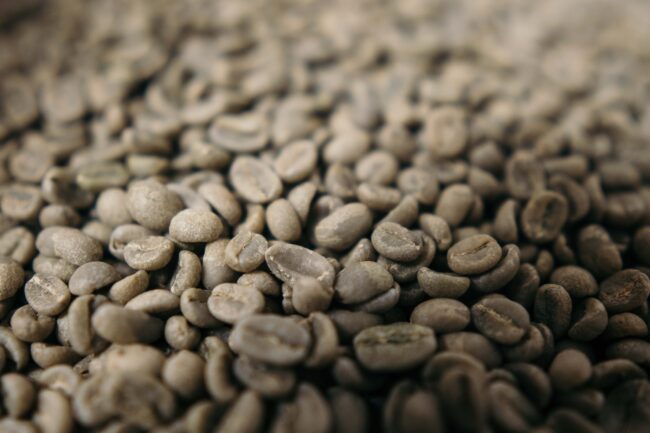July arabica coffee (KCN23) this morning is up +9.00 (+4.85%), and July ICE robusta coffee (RMN23) is up +83 (+3.10%).
Coffee prices this morning are sharply higher, with arabica posting a 3-week nearest-futures high and robusta posting a 2-week high. Fund buying fueled a surge in coffee prices today as an El Nino weather event has begun, which could undercut global coffee production. The U.S. Climate Prediction Center said today that sea surface temperatures across the equatorial Pacific Ocean had risen 0.5 degrees Celsius above normal, and wind patterns have changed to the point where El Nino criteria have been met. An El Nino pattern typically brings heavy rains to Brazil and drought to India, negatively impacting coffee crop production.
A slump in the dollar index (DXY00) today to a 2-week low is bullish for coffee prices. Also, smaller ICE arabica inventories are supportive as ICE arabica coffee inventories have steadily declined over the past four months and fell to a 6-1/2 month low Wednesday of 555,206 bags.
Robusta also has support in increased demand from roasters who are substituting arabica beans for cheaper robusta beans in a variety of retail coffee blends to control production costs and shield consumers from inflation.
Tightness in robusta coffee supplies is bullish for prices. Last month, July robusta posted a contract high, and nearest-futures robusta (K23) posted a record high (data from 2008). Vietnam’s General Department of Vietnam Customs reported on May 28 that Vietnam’s May coffee exports rose +15.7% m/m at 165,000 MT. However, Jan-May Vietnam coffee exports are down -2.2% y/y at 882,000 MT. Vietnam is the world’s largest producer of robusta coffee beans. Also, the USDA’s FAS projected on May 22 that 2023/24 Indonesian robusta coffee production would fall -20% y/y to 8.4 mln bags after excessive rain hindered pollination. Indonesia is the world’s third-largest robusta coffee producer.
In a bearish factor, Wednesday’s annual report from the USDA’s FAS projected that Brazil 2023/24 arabica coffee production would climb +12% y/y to 44.7 mln bags. The USDA said most of the coffee-producing areas are in the negative year of the biennial production cycle, and rainfall volumes have been mostly favorable in all growing regions.
Coffee prices also have support on concerns heavy rain in Brazil’s coffee-growing areas will slow the country’s coffee harvest. Somar Meteorologia reported Monday that Brazil’s Minas Gerais region received 31.4 mm of rain in the week ended June 4, or 158% of the historical average. Minas Gerais accounts for about 30% of Brazil’s arabica crop.
An excessive long position by funds of robusta futures could provide fuel for any long liquidation pressures. Last Friday’s weekly Commitment of Trader’s (COT) report showed funds boosted their net-long robusta coffee positions by 849 in the week ended May 30 to 43,854, a 16-month high.
Global coffee supplies have tightened after the International Coffee Organization (ICO) reported on May 4 that global 2022/23 coffee exports during Oct-Mar fell -6.4% y/y to 62.295 mln bags. The Colombia Coffee Growers Federation May 4 that Colombian Apr coffee exports fell -15% y/y to 719,000 bags. Also, Cecafe reported on May 11 that Brazil’s Apr green coffee exports dropped -14% y/y to 2.39 mln bags. By contrast, Honduran May coffee exports soared +79% y/y to 1.2 million bags. Honduras is Central America’s biggest exporter of arabica beans.
On the negative side for arabica was the projection from the USDA’s FAS on May 22 that Colombia’s 2023/24 coffee production would climb +2% to 11.6 mln bags. Colombia is the world’s second-largest arabica bean producer.
A bearish factor for robusta coffee was the projection from the USDA’s FAS on May 18 that Vietnam’s 2023/24 coffee production would climb +5% to 31.3 mln bags. Another negative factor is an increase in ICE-monitored robusta coffee inventories May 24 to a 5-3/4 month high.
Arabica has carryover support from May 18 when Conab cut its Brazil 2023 coffee crop estimate to 54.7 mln bags from 54.9 mln bags forecast in Jan.
Robusta has support on global supply concerns after coffee trader Volcafe forecasted the global 2023/24 robusta coffee market would see a record deficit of 5.6 mln bags. In addition, the Association of Indonesian Coffee Exporters and Industries said that Indonesia would see its 2023 coffee production fall -20% y/y to 9.6 mln bags due to damage from excessive rainfall across its growing regions.
The International Coffee Organization (ICO) projects the global 2022/23 coffee market deficit will widen to -7.3 mln bags from a -7.1 mln bag deficit in 2021/22. ICO projects that 2022/23 global coffee production will increase +1.7% y/y to 171.27 mln bags, and 2022/23 global coffee consumption will increase +1.7% y/y to 178.53 mln bags.
The USDA, in its bi-annual report released on December 23, cut its global 2022/23 coffee production estimate by -1.3% to 172.8 mln bags from a June estimate of 175.0 mln bags. In addition, the USDA cut its 2022/23 global coffee ending stocks estimate by -1.7% to 34.1 mln bags from a June estimate of 34.7 mln bags. Meanwhile, the USDA’s Foreign Agriculture Service (FAS) on November 22 cut its Brazil 2022/23 coffee production forecast by -2.6% to 62.6 mln bags from a prior estimate of 64.3 mln bags. This year was supposed to be the higher-yielding year of Brazil’s biennial coffee crop, but the coffee output was slashed by drought.




